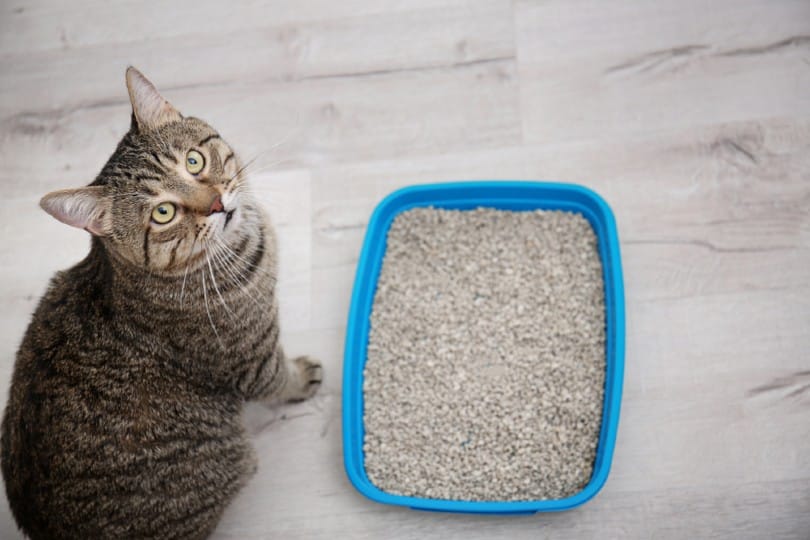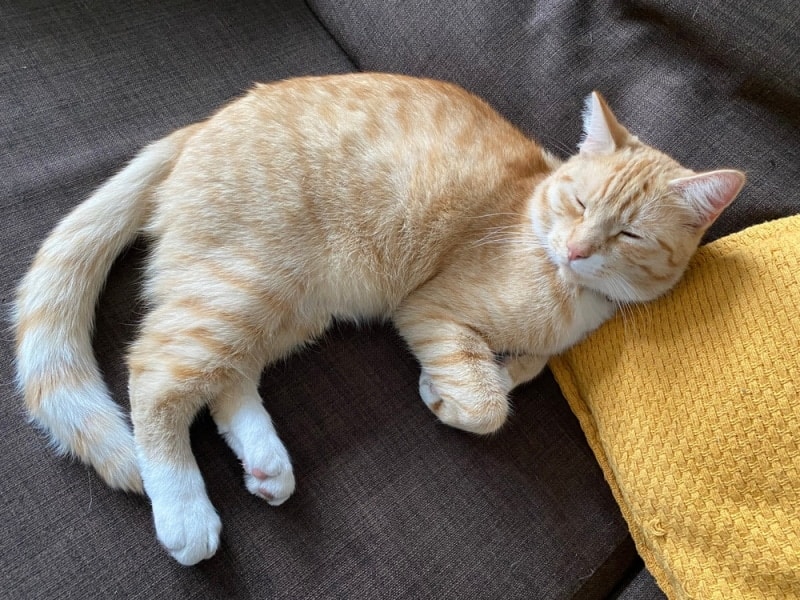Cats with arthritis need special care to overcome the pain and stay active. If your feline friend has been diagnosed with arthritis, they will become slower and won’t enjoy their playing time as much as before.
While the condition primarily affects senior cats, it can also impact felines from as young as age 2. Therefore, it’s important to observe your cat and consult a vet when you suspect any unusual behavior.
Expert veterinarians recommend safe workout sessions for cats with arthritis to keep them active and healthy. However, motivating your cat to exercise is more challenging than with dogs. They may show resistance in the beginning, but things will generally improve with some positive reinforcement.
Including environmental modifications and practicing safe exercises can help your cat manage their pain. These changes also improve their life quality and overall health. Let’s get into more details.

Safe Exercises for Cats With Arthritis
After making the necessary environmental modifications, it’s time to develop a workout session for your arthritic cat. Gentle exercises keep pets active and help them efficiently manage their pain.
1. Encourage Short Walks
While it’s painful for your arthritic cat to walk for too long, you should encourage them do it for shorter periods under your supervision in a space that they are comfortable in.
2. Consider Taking Them Swimming
Many owners think cats don’t like water, but some breeds actually like taking a dip in cold water occasionally. It is also quite effective in pain management in arthritic cats.
Swimming relieves pressure from the cat’s inflamed joints and activates their stiff muscles. As a result, these felines learn how to overcome their pain and discomfort over time. However, some cats don’t like swimming, so make sure your pet does before pursuing water activities.

3. Gentle Feather Chase
A feather tied to a string is a simple way to entice your cat to get moving. You should keep these play sessions short, but if they aren’t interested in walking or swimming, this is another option.

Environmental Modifications for Arthritic Cats
Environmental modifications can help you make your arthritic cat more comfortable at home. Here are some things you can try for your pal’s well-being.
4. Quick Access to Necessities
Over time, your arthritic cat gets weaker, so reaching specific spots becomes impossible for them. So, you must provide them with easy access to fulfill their necessities, including food, toys, water bowls, and beds. Here is how you can ensure your pet’s easy access:
- Place Food and Water in an Accessible Area. The food and water come first. Since cats need both of these things throughout the day, they should be placed in an area your feline can access easily without jumping or climbing. Ensure that your pet doesn’t have to deal with going to the basement or up any stairs in general.
- Allow the Cat Easier Access to Spend More Time With You. Some cats are more affectionate than others, so they like to cuddle and snuggle next to their owners in bed. Unfortunately, arthritis pain makes it unbearable for them to climb the bed. As a result, they start staying alone and become introverted. Thus, you can install a ramp next to your bed to make it easier for your pet to snuggle with you.
- Offer Your Cat Plenty of Elevated Spaces. You can also install a ramp next to your cat’s favorite window to let them watch birds outside. Do the same with other elevated spaces as well. Doing so will keep your pet busy, and they won’t be destructive out of boredom.
5. Introduce Easily Accessible Litter Boxes
Start by making your cat’s litter box more accessible. Cats with arthritis suffer from severe joint pain, restricting their mobility and making them more vulnerable to accidents when exiting or entering litter boxes. Many cats don’t even try to squat in the box because it hurts them. Shop for litter boxes with lower openings that are still wide enough for your cat’s size. You can also offer a couple of different options to see which type they prefer so you know which one is easiest on their body.

6. Add Non-Slippery, Stable Surfaces
Cats with arthritis face difficulties in walking and standing on slippery surfaces like hardwood, vinyl, or tile. So, as a responsible pet owner, you can add matts and rugs to slippery areas to your home. It will make your cat feel more secure and reduce the chances of accidents.
7. Opt for Supportive Bedding
Your cat’s bed significantly ensures its comfort and relieves pain. Vets often recommend supportive orthopedic beds for cats with arthritis and other joint conditions. You can also opt for bedding made of memory foam to comfort the pet’s inflamed joints when they rest.
Cold weather brings more discomfort to arthritic cats. So, ensure your pet’s bed is warm and comfortable enough. You can also opt for a heated bed to relieve the feline’s pain.
If you’re unsure of which bed is right for a cat with arthritis, contact your vet for a recommendation.
If you need to speak with a vet but can't get to one, head over to PangoVet. It's an online service where you can talk to a vet online and get the advice you need for your pet — all at an affordable price!

Conclusion
Arthritic cats need special attention from their owners to manage their pain and live normal lives. You can always consult a vet and plan a safe exercise routine for your cat. However, the modifications and exercises on this list are a great place to start.
Featured Image Credit: Tatiana Burlutckaia, Shutterstock











